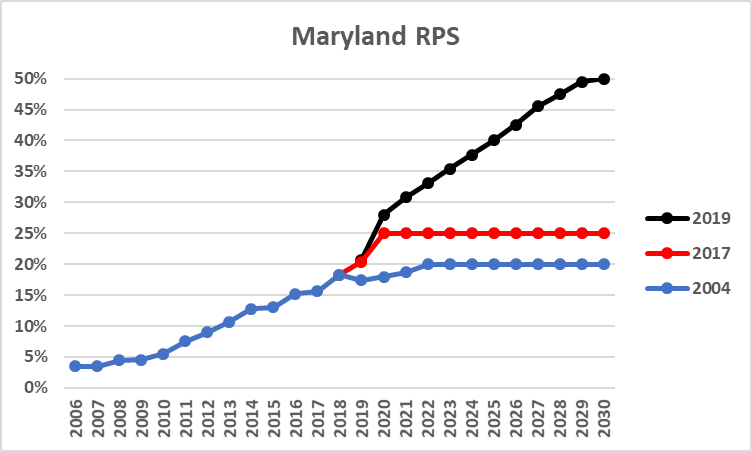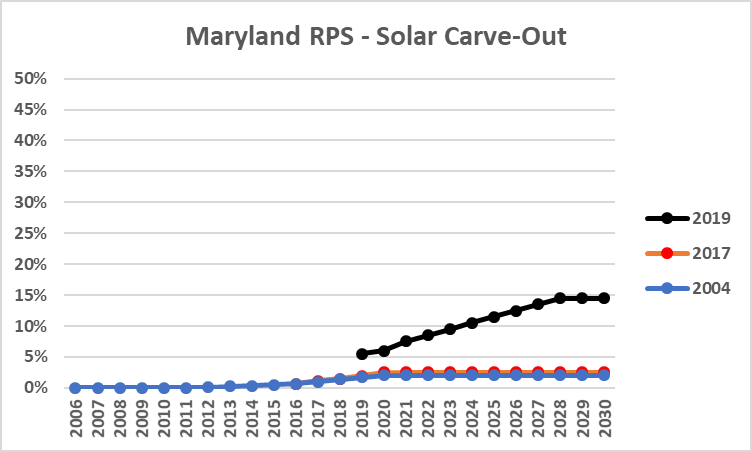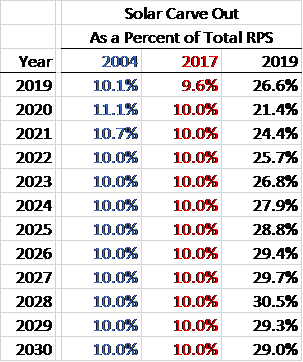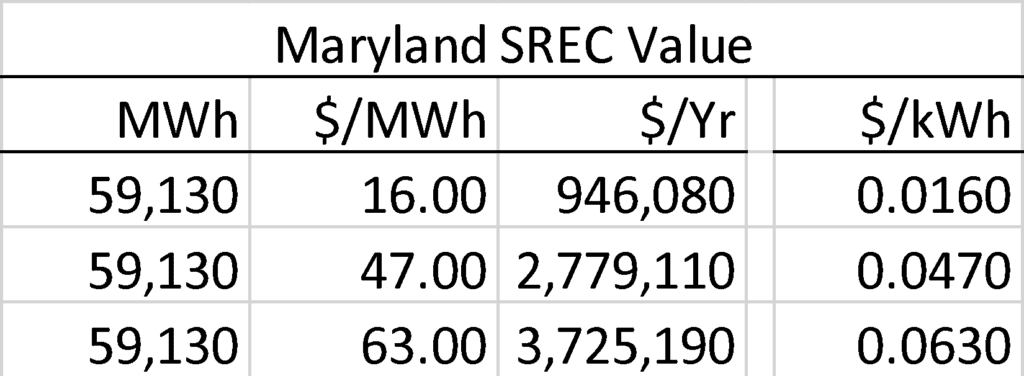Maryland Renewable Energy Portfolio Standard – A Lot of Change for No Action
During this year’s legislative session, the Maryland General Assembly passed the Maryland Clean Energy Jobs Act. Maryland’s governor, Larry Hogan, then had until 30 days after the legislative session (i.e., until May 30) to sign the bill, veto the bill, or take no action. By taking no action, the bill would automatically become law. The governor took no action and the bill is now law.
RPS
The new law increases Maryland’s renewable energy portfolio standard (RPS) from 25% by 2020 to 50% by 2030. This is shown graphically below, along with Maryland’s original 2004 and 2017 RPS goals (also see Maryland RPS – Veto Override):

Solar Carve Out
The law also increases the “solar carve out” from 2.5% by 2020 to 14.5% by 2028. This is a dramatic increase and is shown graphically below:

The following table shows the Maryland solar carve out as a percentage of the total Maryland RPS, increasing from 10% in 2019 to about 30% in 2027 and beyond.

SRECs
Prior to the bill being passed by the Maryland legislature, Maryland renewable energy credits (SRECs) were trading at about $16 per megawatt-hour. Upon passage of the bill, Maryland SRECs increased to about $47 per megawatt-hour. With the bill now becoming law, Maryland SRECs have increased in value to $63 per megawatt-hour.
Economic Value
A 45 megawatt solar project with a 15% capacity factor would generate 59,130 megawatt-hours per year:
45 megawatts x 15% CF x 8,760 hours per year = 59,130 megawatt-hours
Prior to the bill being passed by the Maryland legislature, 59,130 megawatt-hours of Maryland SRECs were worth $946,080 annually. With the passage of the bill, this value increased to $2,779,110. With the bill now law, the value has increased to $3,725,190. Please note that this ignores transaction costs.

Thought of in units generally used in utility billing, these SREC values equate to an increase from 1.6 cents per kilowatt-hour to 6.3 cents per kilowatt-hour.

This represents value to the owner of the SRECs in addition to the value received for the energy production from the solar facility.
If the energy output of the solar project in this example is sold for 6 cents per kilowatt-hour, SRECs now add another 6.3 cents, for a total of 12.3 cents per kilowatt-hour.
That’s a lot of change for no action.
Note: This Maryland legislation includes a grandfathering provision, meaning that customers who sign up for or extend their supply contracts before the grandfathering period ends are grandfathered from the additional RPS costs until the expiration of the grandfathered contracts. This is a good time to consider extending your electricity supply contracts. Contact us for more details.
Evelyn Teel contributed to this article.
The Avalon Advantage – Visit our website at www.avalonenergy.us, call us at 888-484-8096, or email us at info@avalonenergy.us.
Please feel free to share this article. If you do, please email or post the web link. Unauthorized copying, retransmission, or republication is prohibited.
Copyright 2019 by Avalon Energy® Services LLC
